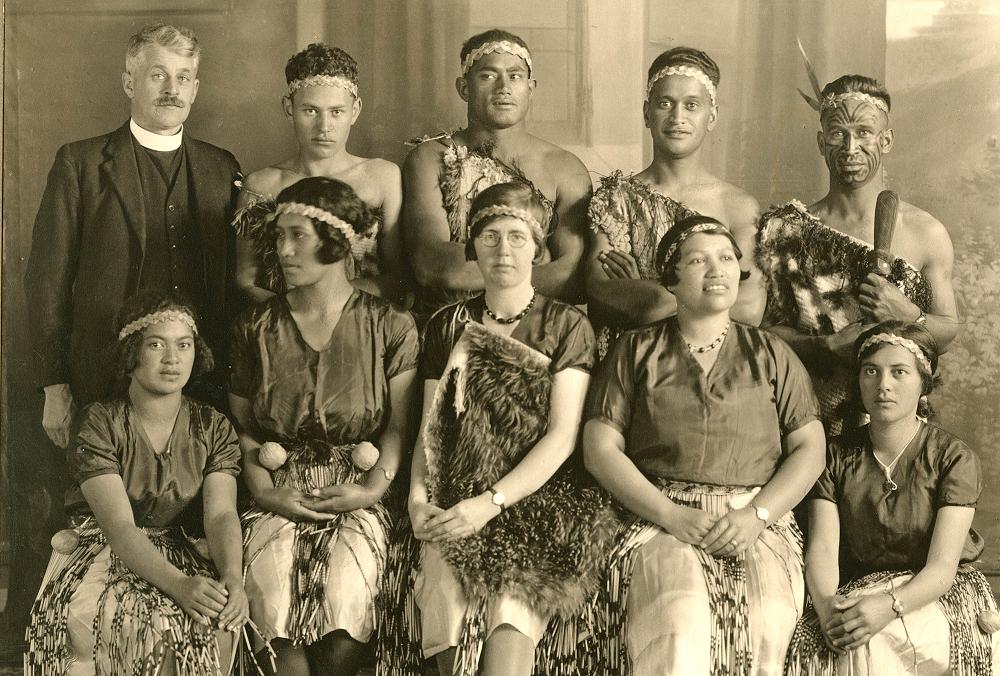
John Laughton and the Māori Church
We recently received a collection of material from Te Aka Puaho, the Māori branch of the Presbyterian Church of Aotearoa New Zealand. This material is full of taonga, including minute books relating to the Presbyterian Māori Missions and material relating to the Māori Section of the National Council of Churches. A large part of the material comprises a personal collection relating to the Rev. John Laughton who played a prominent and vital role in the leadership of the Māori Missions and in the development of Te Hīnota Māori, the Presbyterian Māori Synod.
John Laughton was born on windswept Orkney, off the far north of Scotland in 1891. He emigrated to New Zealand at the age of 12 with his family and settled at Mosgiel, near Dunedin. He studied at Otago University and then in 1914 became a Presbyterian home missionary. Working at Piopio in the King Country he came into contact with Māori and learnt te reo. In 1915 he married Margaret Leask, but sadly she died two years later.
In 1918 John Laughton was invited to join the Presbyterian Māori Missions and he began work among Tūhoe at Maungapōhatu in Te Urewara. This was the settlement of the Māori prophet, Rua Kēnana, who two years previously had been imprisoned following a police raid on Maungapōhatu in which two people, (one of them Rua's son) had been shot and killed. *
Rua had been released from prison not long before Laughton arrived and initially there were tensions between the two men. Later they went on to develop a lasting friendship which endured for 20 years. When Rua died in 1937, Laughton conducted his funeral service.
Both men were deeply concerned that the children of Maungapōhatu should receive an education and Laughton worked to establish a school there. In 1918 he also worked to establish a school at Ruatahuna (with Sister Annie Henry and Abigail Monfries) and later additional schools at Matahī, Tanatana, Te Teko and Te Onēpu.
In 1921 he married Horiana Te Kauru from Nūhaka, who was a teacher at the Matahī School, and they had five children together. The family later moved to Taupo and then to Ohope and in the 1930s Laughton became Superintendent of the Māori Missions.
Laughton's vision was of a Māori Church that went beyond a "Mission to Māori", to one which reflected Te Ao Māori and strove to develop Māori leadership. Speaking to the General Assembly of the Presbyterian Church in 1955 he said that there could be no question that the new systems in which Māori took full part in leadership were “a far more effective agency for the proclamation of the Gospel and the extension of Christ’s Kingdom”.
He was a driving force behind the development of Te Hīnota Māori (the Māori Synod) and the building of the wharenui, Te Maungarongo, at Ohope. He also treasured the language. He was fluent in te reo and helped to produce the Māori Service Book. He edited Te Waka Karaitiana, the magazine of the Māori Church, and supervised the printing of the Revised Māori Bible in 1950. The collection includes sermons and a Christmas message written in te reo, as well as the script for what appears to be a radio broadcast.
He died in 1965 and is buried at Whakatane where a stone from the sacred maunga at Maungapōhatu is placed upon his grave.
*In 2019 the Crown granted Rua Kēnana a statutory pardon and made a formal apology to his descendants.
